top of page

Parramatta Observatory
Sir Thomas Brisbane, then governor of NSW, established Parramatta Observatory in 1821. Initially, its astronomers observed star positions with a transit telescope that provided right ascensions and a mural circle that provided star declinations. A transit circle, an instrument that combined the functions of the earlier instruments, arrived in 1835. Made by Thomas Jones of London, it was placed asymmetrically between two piers. These piers, as shown, are the only extant remains of Parramatta Observatory. Photo Nick Lomb
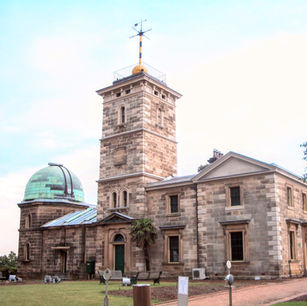
Sydney Observatory
Sydney Observatory began operating in 1858, with the Reverend William Scott as the first government astronomer. It is located on Observatory Hill, which is the highest point in central Sydney. The location was chosen so that its time ball could be seen from as much of Sydney Harbour as possible. The observatory is now under the auspices of the Powerhouse Museum. Photo Nick Lomb

Melbourne Observatory
Melbourne Observatory was established in 1863 under the supervision of Government Astronomer Robert L. J. Ellery. The observatory’s variety of instruments included the famous Great Melbourne Telescope. Two of its instruments were, and still are, in the two domes pictured. The left dome contains an 8-inch (20-cm) lens telescope by the London makers Troughton & Simms, while the other dome holds the Dallmeyer photoheliograph, an instrument designed to take photos of the Sun. Photo Nick Lomb

The photoheliograph at Melbourne Observatory
The photoheliograph, an instrument designed to photograph the Sun, in a dome at Melbourne Observatory. London instrument maker, John Henry Dallmeyer made this and a number of similar instruments for the 1874 transit of Venus. One of the other photoheliographs went to Sydney Observatory. Although back in its original location, the photoheliograph is privately owned by a senior member of the amateur group, Astronomical Society of Victoria. Photo Nick Lomb

Perth Observatory
Perth Observatory began operations in 1896 with William Ernest Cooke as its first government astronomer. It was situated on Mt Eliza that overlooks the city of Perth. In the 1960s it was demolished and the observatory transferred to Bickley, about 25 km east of Perth. The residence of the government astronomer remains, as shown. Photo Nick Lomb

The dome of the Lowell telescope at Perth Observatory
The dome of the Lowell telescope at Perth Observatory is raised nine metres above the ground. The elevation above the surrounding bush improves the telescope’s images by ensuring a smooth flow of air. The telescope was officially opened in 1971 and belongs to the Lowell Observatory in Arizona, USA. Among other research, astronomers using the telescope were the co-discovers of the rings around the planet Uranus in 1977. Photo Nick Lomb
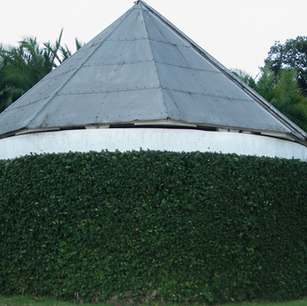
John Tebbutt's home observatory
John Tebbutt (1834–1916) was a well-known amateur astronomer with an observatory at his home in the town of Windsor, just outside Sydney. He became internationally famous with his discoveries of the Great Comet of 1861, followed up with the discovery of another bright comet 20 years later. Tebbutt’s largest telescope was an 8-inch (20-cm) Grubb lens telescope. After Tebbutt’s death in 1916 the telescope had a number of locations, including over 40 years in New Zealand. It is now back in its original location, in the pictured dome. Photo Nick Lomb

Ballarat Observatory
Ballarat observatory opened in 1886 as the first municipal observatory in Australia. Its largest telescope is a locally-built 26-inch (66-cm) Newtonian reflector. Shown is the Observatory’s Jelbart dome containing a 5-inch (13-cm) Cooke lens telescope. Photo Nick Lomb
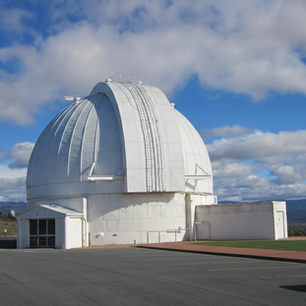
Mt Stromlo Observatory
The main telescope at Mt Stromlo Observatory was a 74-inch (1.9-m) reflecting telescope. It was opened in 1955 and remained the largest in Australia until the Anglo-Australian telescope began operations in 1975. The telescope was housed in this dome but was unfortunately destroyed in the Stromlo fire of 2003. Photo Nick Lomb
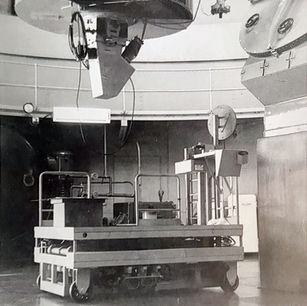
The Carnegie image-tube spectrograph
The Carnegie image-tube spectrograph at the Cassegrain focus of the Mount Stromlo 74-inch (1.9-m) reflector in 1968. Below is the lifting mechanism that allowed observers to operate instruments at that focus and track with the telescope. Photo Nick Lomb
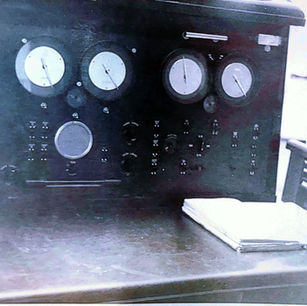
The control desk of the Mount Stromlo 74-inch (1.9-m) reflector
The control desk of the Mount Stromlo 74-inch (1.9-m) reflector in 1968, used by the night assistants. Further Mt Stromlo historical images are available at https://archives.anu.edu.au/exhibitions/through-adversity-stars-100-years-mount-stromlo-observatory. Photo Nick Lomb

Great Melbourne Telescope
Mount Stromlo Observatory purchased Melbourne Observatory’s Great Melbourne Telescope in 1940. The massive polar axis and other parts were then utilised in a new 50-inch (1.3-m) telescope. The 2003 Mt Stromlo fire telescope destroyed the telescope and many other instruments and buildings at the observatory. The photo was taken soon after the fire. Photo Nick Lomb
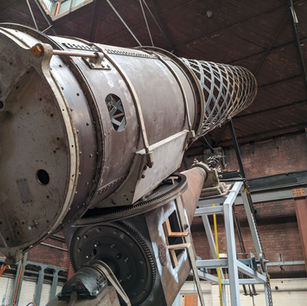
The burnt-out parts of the Great Melbourne Telescope
In 2008, the burnt-out parts of the Great Melbourne Telescope were brought back to Melbourne. There the Museum of Victoria and a dedicated team of volunteers from the Astronomical Society of Victoria are working to restore the telescope. The restoration project is continuing, but the now reassembled telescope can be seen at Scienceworks, Melbourne. Photo Nick Lomb

Parkes Radio Telescope / Murriyang
The Parkes Radio Telescope, now also known by the Wiradjuri name of Murriyang, has been observing the radio sky at Parkes, NSW since 1961. In its early days, the telescope’s most famous activity was receiving the TV transmission of the first footsteps on the Moon in 1969 and relaying the signal world-wide. Many historic pictures of this and other Australian radio telescopes are available at https://www.atnf.csiro.au/resources/imagearchive/. Photo Nick Lomb

Anglo-Australian Telescope
The 3.9 Anglo-Australian Telescope at Siding Spring Observatory pictured in 2012. This telescope, built jointly by the British and Australian governments, began regular scheduled operations in June 1975. A consortium of Australian universities now manage the telescope but its name has been left unchanged. Photo Nick Lomb

The control desk of the Anglo-Australian Telescope
The control desk of the Anglo-Australian Telescope at Siding Spring Observatory, pictured in 2012. The AAT was the first large telescope under computer control. Photo Nick Lomb

The Fleurs Radio Telescope
The Fleurs radio telescope was at Badgery’s Creek, just outside Sydney. It originally consisted of 32 dishes, each of 5.8-m diameter, spread over east-west and north-south arms. After CSIRO transferred ownership to the University of Sydney, new larges dishes were added and the instrument became the Fleurs Synthesis Telescope. The photo shows some of the original dishes. Photo Nick Lomb
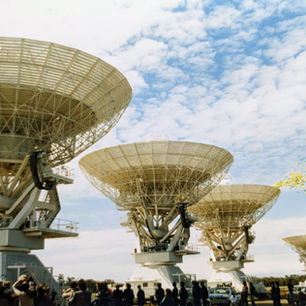
The opening of the Australia Telescope in September 1988
The opening of the Australia Telescope in September 1988. The core of the radio telescope is the Australia Telescope Compact Array (ATCA) at Narrabri, NSW. Four of ATCA’s six 22-m dishes are shown in the image. Photo Nick Lomb

The Emu in the Sky
The emu in the sky. The head of the emu is the Coalsack nebula, the Southern Cross (Crux) is directly above. Below is the emu engraving at the Elvina engraving site, in Kuring-Gai Chase National Park, near Sydney. Credit: Barnaby Norris & Ray Norris
bottom of page
